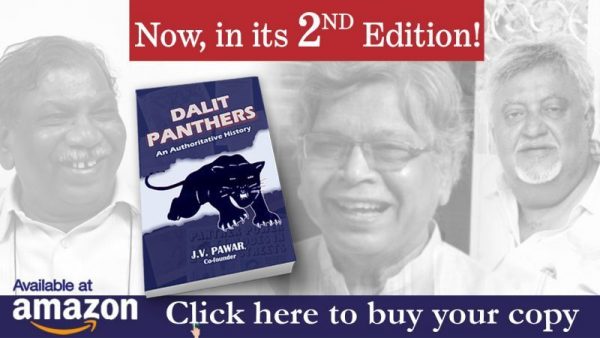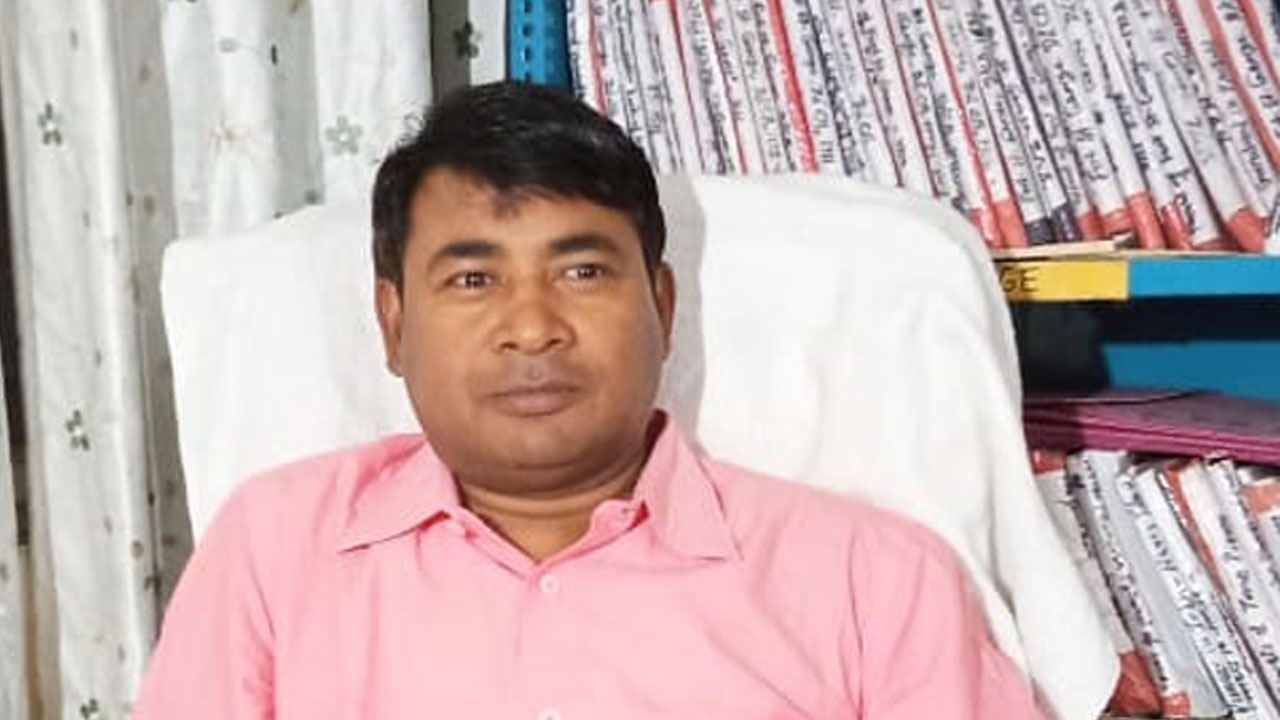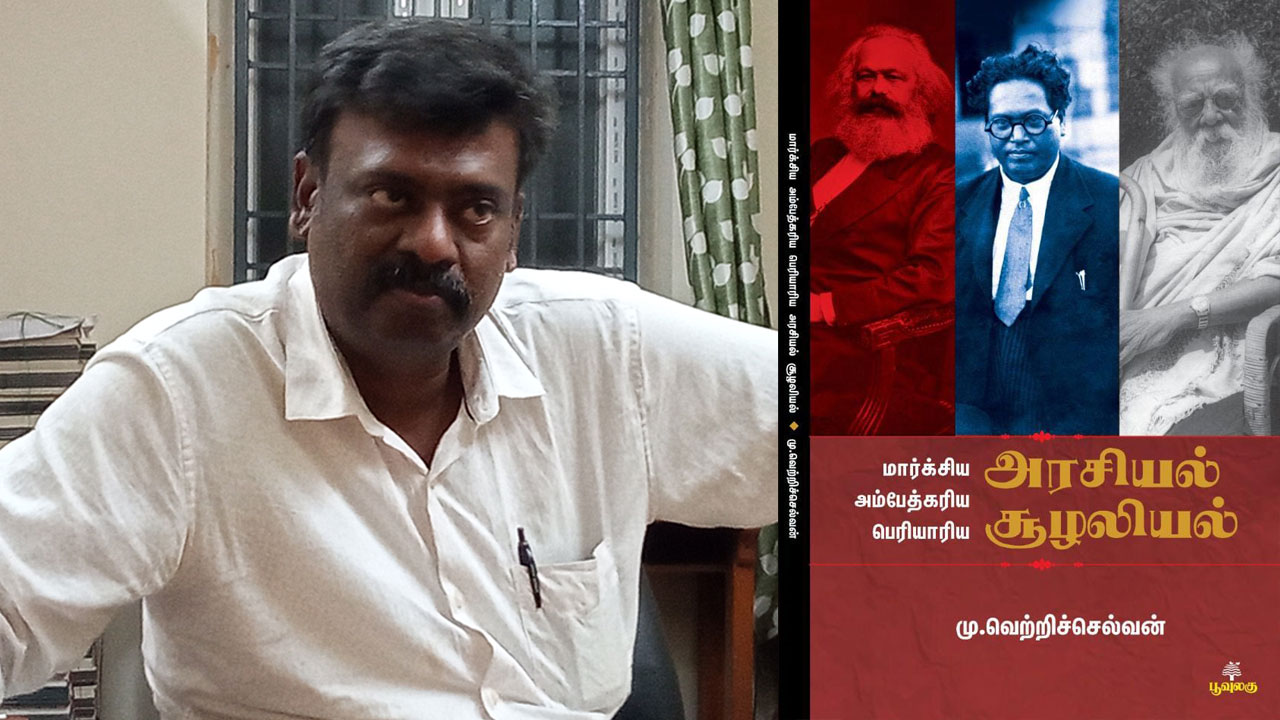Kerala’s past and present through the eyes of a Dalit historian
In this first part of an interview with FORWARD Press, P. Sanal Mohan, professor of History at Mahatma Gandhi University in Kottayam, Kerala, and author of the widely acclaimed Modernity of Slavery: Struggles Against Caste Inequality in Colonial Kerala, talks about how he started researching slavery in Kerala – which lasted well into the 20th century – and made some startling discoveries.
How were you drawn into researching the history of Dalit Christians? How much of the process was personal?
As I was finishing my masters in 1984, I got a chance to read the articles in the first volume of the journal Subaltern Studies and similar literature. Although they were published in 1982, we got them a couple of years later. Towards the time I was finishing my MA final year, I happened to see some of those articles and I thought to myself that this was fantastic material to be coming out. Subsequently, when I joined the MPhil programme, there was a lot of discussion on peasant movements and mobilizations. I also had a course on Peasant Movements in India in my MA History final year, because I specialized in Modern History. That took me to reading on the sociology and history of peasant societies, and I do come from that kind of a background – marginal farmers, peasants. I thought that was a fantastic area of research. That is what I researched for my MPhil. While reading Subaltern Studies and interesting historiographies, I was also fascinated by the analysis of religion, which was in one of the books. The book Elementary Aspects of Peasant Insurgency in Colonial India, by Ranajit Guha, though published in 1983, became available to us in 1986. It talked about peasant consciousness, religion and so on. But even at that point of time I never thought I would do this kind of research.
However, subsequently I thought it would be interesting to read religion in relation to Dalits. That’s largely because of my own background. My parents belong to the Catholic Church. That was a lifeworld quite familiar to me. We also have a history of migration from the Travancore region of Kerala to the north, Malabar. But in the 1980s I never thought of doing any research of this kind. But subsequently when I started teaching in the Mahatma Gandhi University in Kottayam, I found a lot of more interesting histories of social movements, which were not really known outside Kerala, which had a lot to do with religion, especially Protestant Christianity, from the middle of the 19th century. So I used to read this kind of history that was available at that point of time. Because of that, when I restarted work for my PhD in Mahatma Gandhi University, I thought I would look for something connected to religion. But even then I hadn’t gone into this history of Dalit Christianity. My initial idea was to work on slavery and also the experiences of the Prathyaksha Raksha Daiva Sabha (PRDS) [launched by Poykayil Appachan] and other movements.
That reading on the history of slavery in Kerala took me to reading archival material and I found that a large chunk was written by the missionaries based in the Travancore region of Kerala. The Church Missionary Society College in Kottayam has a good small archive, where I worked sometime around 1994 and got an idea of the kind of material that was there. Reading the material and also the books that were available at that time made me realize that these narratives and histories were fantastic but also very complex as they dealt with the minds of the people – their thoughts, religious imagination, the ideas of salvation that they had. I thought to myself that this was much more complex than other histories of nationalism and peasant movements that I was familiar with. But the scholars who studied peasant movements also looked at the ideological side of those movements and religion comes out as a factor to be reckoned with. That was already there. But as I read the source material and books I found that the material generated by the missionaries was inviting this sort of research. I found this to be much more challenging. I never knew that I would end up writing all this but I knew that they were promising. So, at one level the social experiences did play a role but at another level, intellectually, I was influenced by radical historiographies.
But there again in radical historiographies we may find religion taking a backseat because there is so much of rationality or a particular kind of rationalism that is part of the social sciences, which denies religion. That may be only a part of this social science engagement. But we also know that within social sciences there is another genre which has been taking religion quite seriously. I had the opportunity to read some of this and so I thought to myself, “OK, that is a very good area of research.” The other point is that unlike the social movements, or let’s say anti-caste movements of the 20th century, when the missionaries interacted with the slave castes from the middle of the 19th century onwards, they did so by engaging with the thoughts of the people, their imaginations – teaching them, interacting with them on an everyday basis – so there was so much documentation on the everyday lives of the people, their emotions, their tribulations, among others. That’s what convinced me that this is an absolutely fascinating and fertile area of research. That is how I got started. Therefore, one could say that the social experience was there and the other side was the academic engagement.
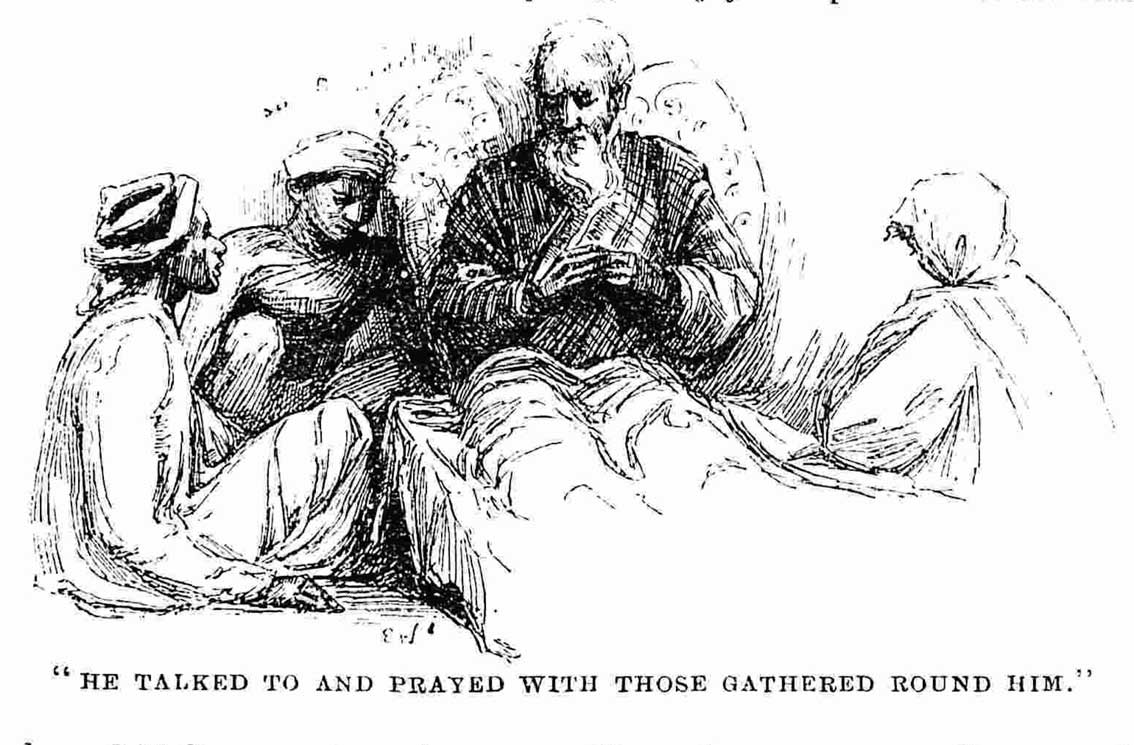
Another interesting point is the anti-caste movements in the village where I grew up, although these movements existed within the church. The caste question came up and Dalit Christians moved out of the church in which they had membership along with the Catholic Syrian Christians. This was the late 1950s. This was a village called Karikkottakary in Kannur District. There were a lot of protest movements. Eventually the Dalits started a new church with the help of the Latin Catholic Diocese of Calicut, which had some missionaries working in the coastal villages of Kannur district. That mission was known as Chirakkal Mission but mostly run by the Italian Jesuit priests. So, the people from my village travelled to Thalassery (Tellicherry) where they met with one of the missionaries, told him about their sufferings and invited him. Subsequently, he came to our village and started a new Latin Catholic church. In Kerala, Latin Catholics are mostly in the coastal areas but there are exceptions. For example, in Kottayam, there is the Latin Catholic diocese at Vijayapuram, which has a substantial Dalit population – about 80 per cent could be Dalits. Likewise in my village, it was an exclusively Dalit Christian migrants’ village. Most of the people had migrated from various parts of Kottayam district towards the end of 1940s. Within a matter of 10 years the caste question surfaced in the church and they moved out of it because of the caste violence within the church – the insults they had to suffer, the sort of segregation which they felt on an everyday basis. There were a lot of stories of that kind.
So, there was some kind of anti-caste radicalism in my village. These were the same people who started the Communist movement there. These were very staunch Catholics but some of them were instrumental in bringing the Communist Party of India (before the split in the party) to the area. The village where I grew up and the families I have intimately connected with have this sort of very interesting religious and political histories. Maybe that also had an influence on me. Recently, one of the projects that we are engaged in is to collect narratives of people who have migrated from the south of Kerala to the north – especially the migration of Dalit Christians to the Kannur district of Kerala which has not been written about, although scholars have been studying histories of migration within Kerala.
Also, there are narratives that do their rounds in the community and we tend to hear them but surprisingly I rarely heard people talking about slavery, the theme which I worked on subsequently. On a very few occasions I have heard narratives of slavery within the family circles, although by the time we started doing the research in the community, that is in the last couple of years, all the elders had passed away. We interview the aged, someone like a 92-year-old woman, Mariam George, who recollected the days of slavery based on what she heard from her parents and grandparents. This memory was quite latent – it was very much with them but they probably kept it something like a secret. If it was not a secret, it was dormant. It was a repressed aspect of their own selves; it didn’t come out in the open in the narratives unless they were really forced to talk about it. I also remember hearing these stories in my childhood but they weren’t substantial. This, we recaptured only recently in the ethnographic fieldwork conducted in the Dalit Christian community from 2015 onwards.
Could you explain what you mean when you say slave castes?
Yes, in this case, Dalits, because enquiries of mine were always confined to the Dalit community, but there is absolutely no problem in including some of the Adivasi communities, too. Comparatively, their positions were different. In Wayanad, Adivasi communities were enslaved and in 1963 an interesting book was written by a civil servant named K. Panoor, who was a deputy collector in the revenue department. Interestingly, he titled the book “Keralathile Africa” (Kerala’s Africa). It is evident that he had a misunderstanding of what Africa is all about. This book is on the Adivasis in Wayanad, although it has chapters on Adivasis of Kannur and Kasargod districts, too. It was probably because they were black and because of all these bodily features which have been in certain ways stereotyped, the author referred to them as such. Panoor was not an IAS officer but subsequently rose through the ranks of the bureaucracy. If you read books of that kind – unfortunately we don’t have a translation – you will realize that a segment of the Adivasi population could have been enslaved. That practice continued even to the middle of the 1970s and then during the Emergency it was outlawed.
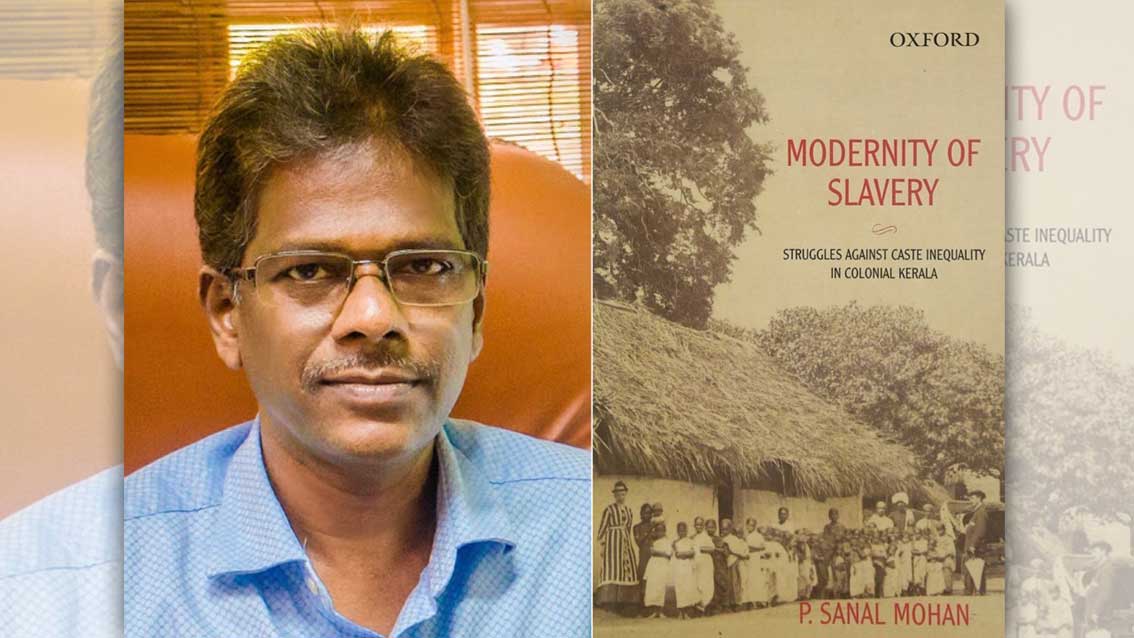
There is a temple in Wayanad district called Valliyoorkavu, where every year the Adivasis, especially the Paniyas, Adiyas and so on, come during festival time and pledge their labour to a landlord. The landlord will take them to his estate and make them work. Therefore it is not just a bonded labour system either. It is a combination of both. There is debt bondage, which is reproduced. It happens within a certain community. Every labourer will not attend that event. There is a definite kind of Adivasi identity involved along with the economic side of debt bondage. Therefore when I speak of enslavement, slavery and slave castes in Kerala, historically a segment of the Adivasis definitely was enslaved but not all of them. Because most colonial ethnographers or administrators have identified the communities that were actually enslaved, we have only a few of these Adivasi communities being part of the slave castes. But it was in the plains and midlands of Kerala with its rice fields, and the rice fields bordering the backwaters of Kerala, that the real physical labour of untouchable slave castes was used.
When I use the term “slave caste” I do make a distinction between, for example, the question of untouchability and the question of slavery. To my mind, although they might have remained as Untouchables, their primary problem was slavery because these people could be bought and sold, heir children could be sold and taken away from their parents and so on. In fact, I wish to distinguish Dalits in Kerala as those who suffered slavery historically, going back to 8th century AD if not earlier.
Untouchability becomes a significant issue because of the Gandhian nationalist discourse, in which untouchability was foregrounded. In their writings on caste in Kerala, I don’t think anyone who claimed to be a nationalist leader of the 20th century mentions a situation like slavery that prevailed here. Therefore, we don’t see much of this even in history books. Primarily, for the nationalist leaders, reforms were concerned with the question of untouchability but to my mind as a researcher in history, the primary problem was slavery and slave transaction. It was slavery that made them historically landless and alienated and also brought in kin alienation leading to, what critical scholarship, would refer to as “social death”. I would suggest that some numerically strong castes from the Dalit community who were part of the agricultural economy as labourers were enslaved, like Pulayas, Parayas, Kuravas and others, and some Adivasis too, like the Paniyas, Adiyas, as I said earlier. But large segments of Adivasis were somewhat removed from the midland agricultural communities. They were occupying the spaces in the hills and therefore their marginality was a bit different from the social world which enslaved castes subsisted or existed in.
Forward Press also publishes books on Bahujan issues. Forward Press Books sheds light on the widespread problems as well as the finer aspects of Bahujan (Dalit, OBC, Adivasi, Nomadic, Pasmanda) society, culture, literature and politics. Contact us for a list of FP Books’ titles and to order. Mobile: +917827427311, Email: info@forwardmagazine.in)
The titles from Forward Press Books are also available on Kindle and these e-books cost less than their print versions. Browse and buy:
The Case for Bahujan Literature
Dalit Panthers: An Authoritative History
